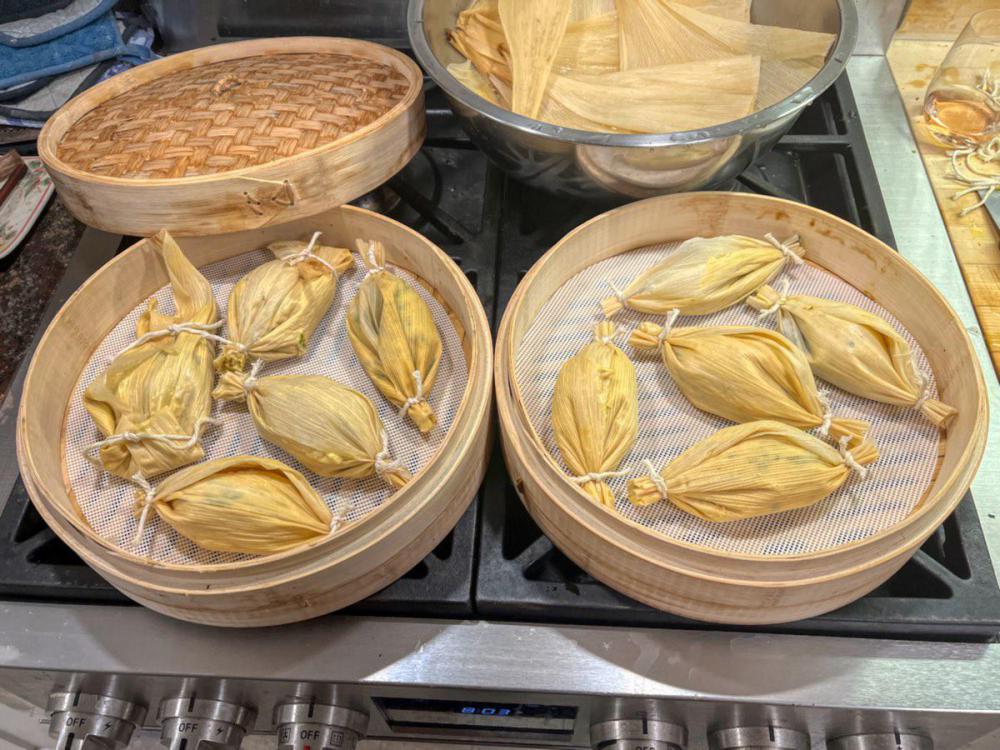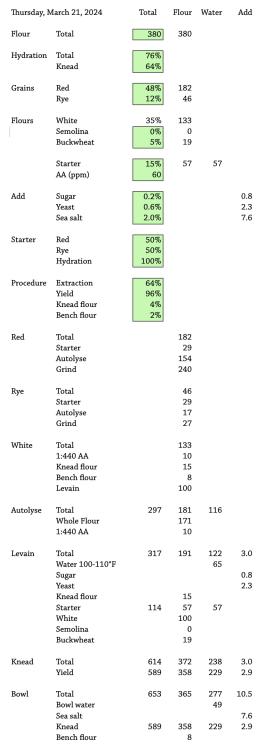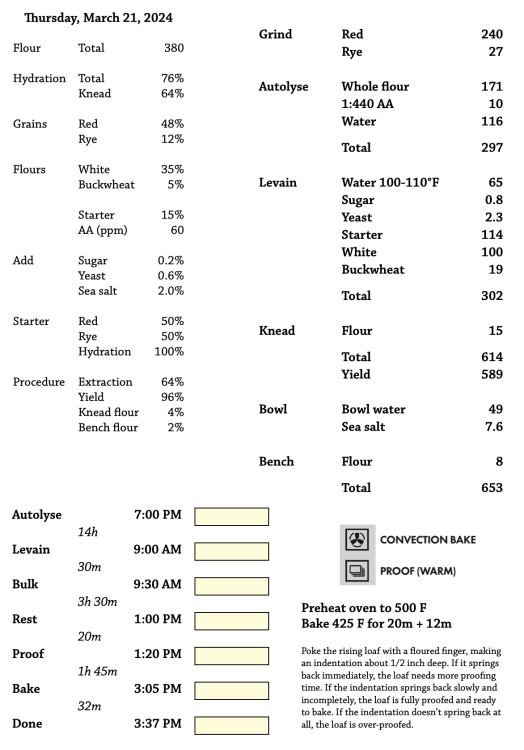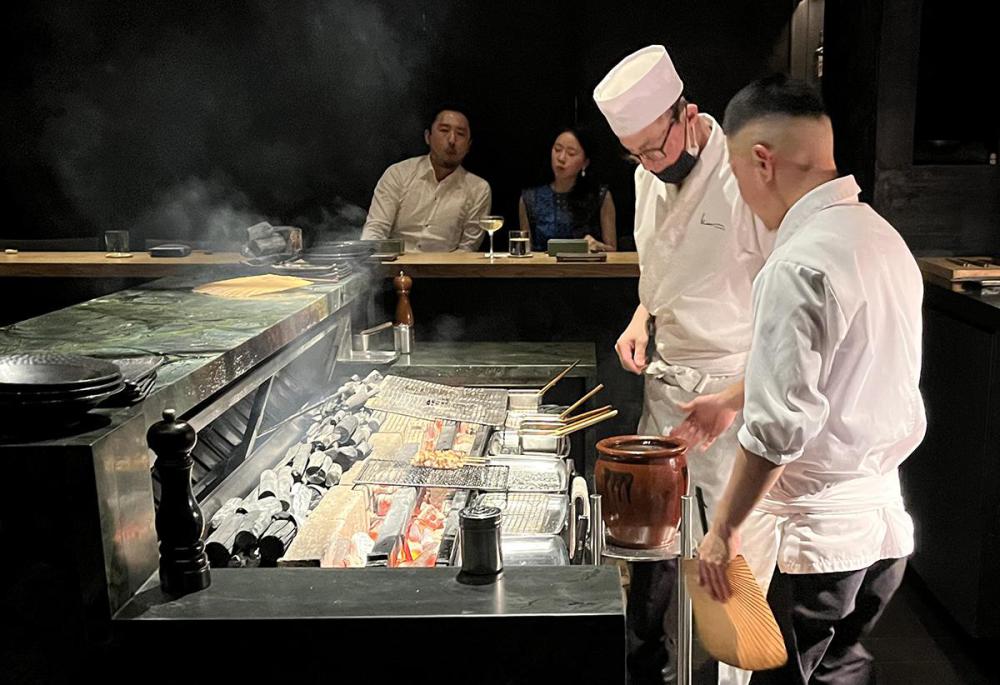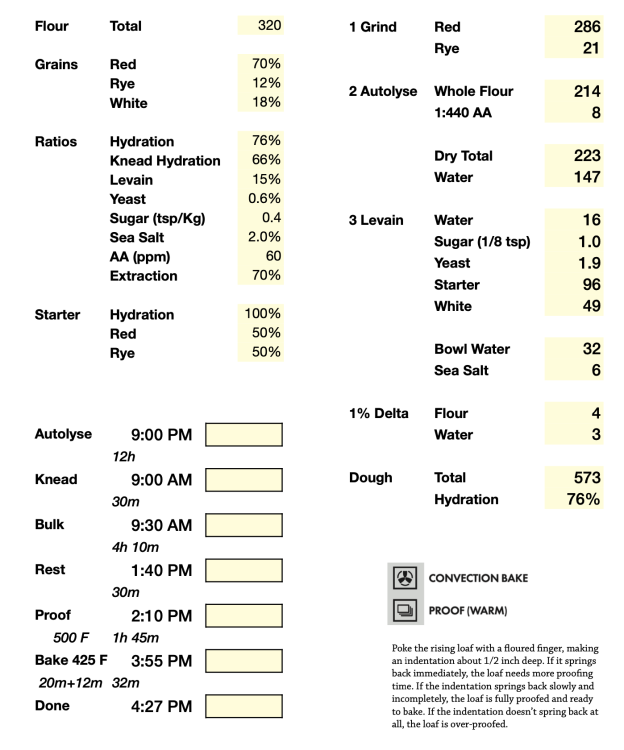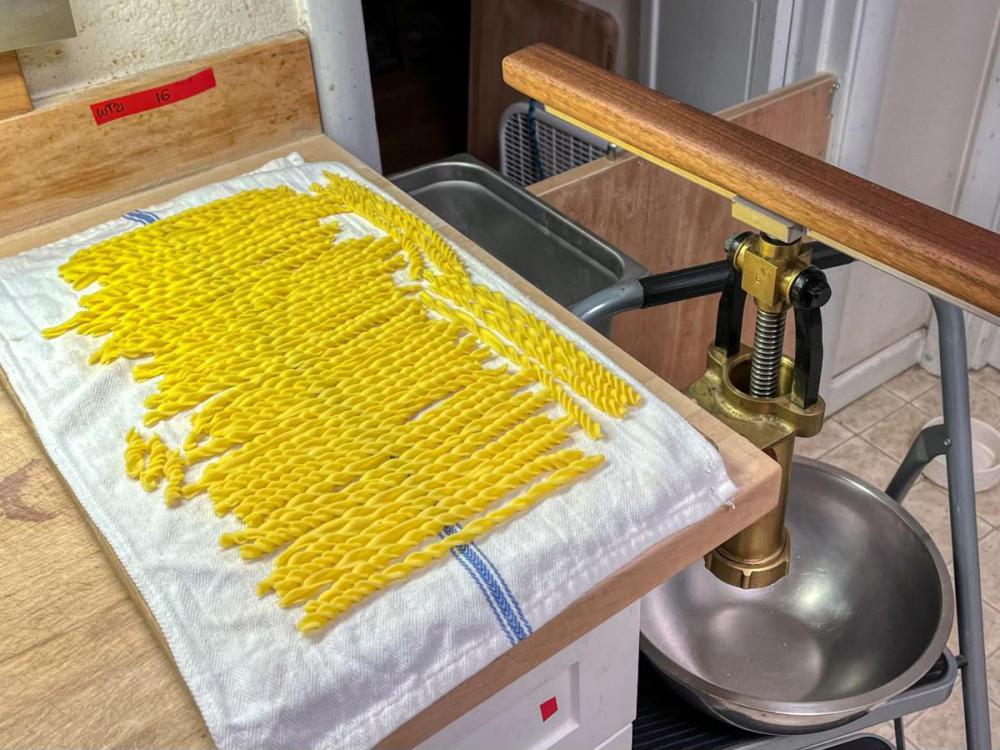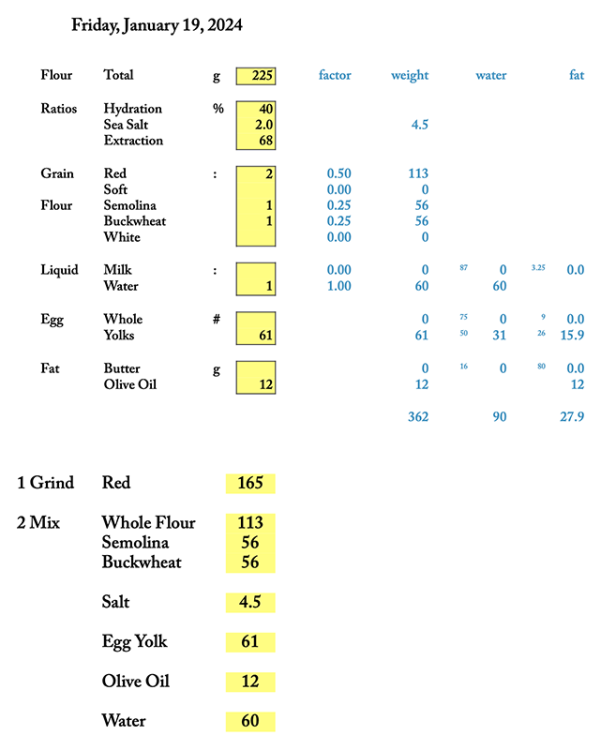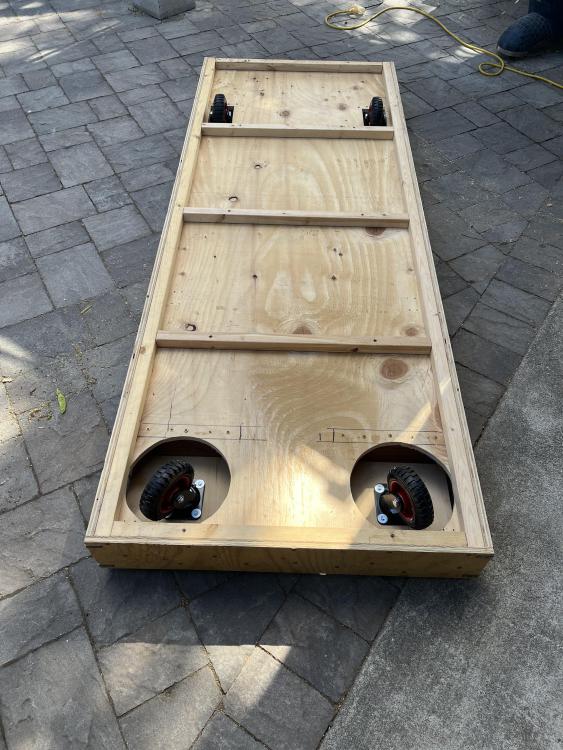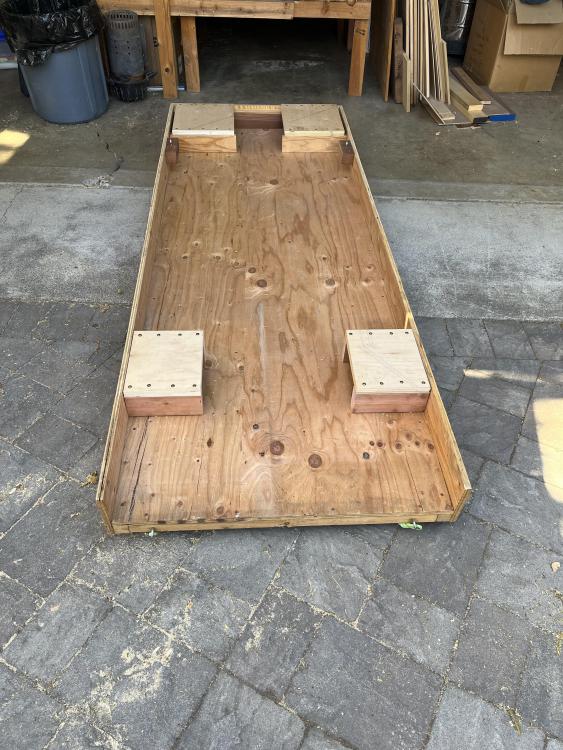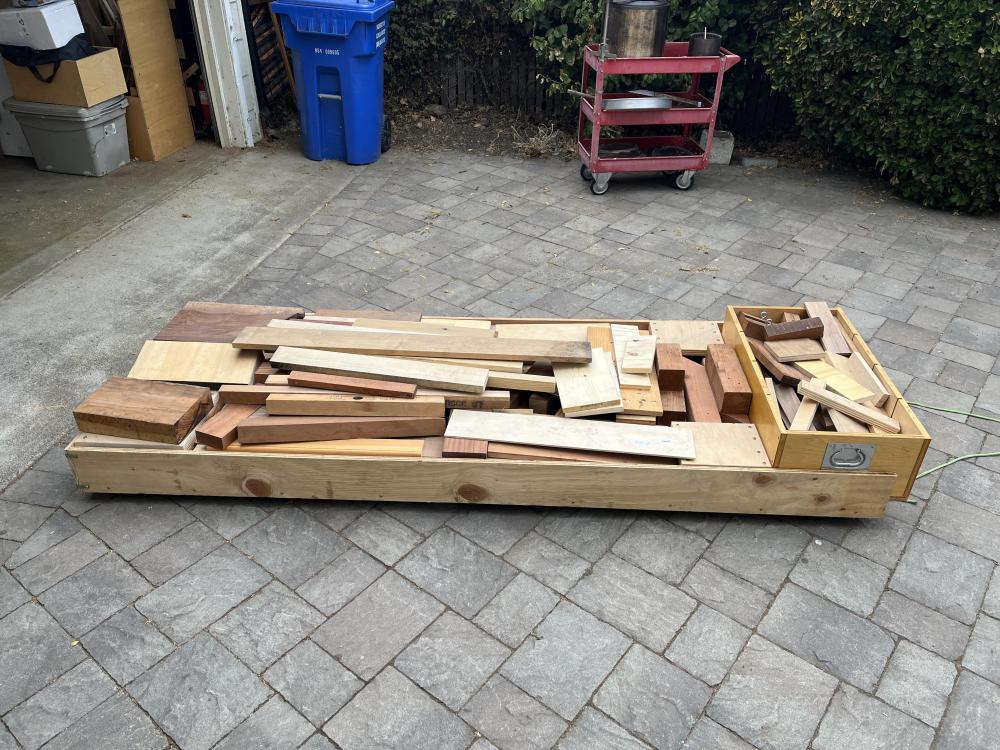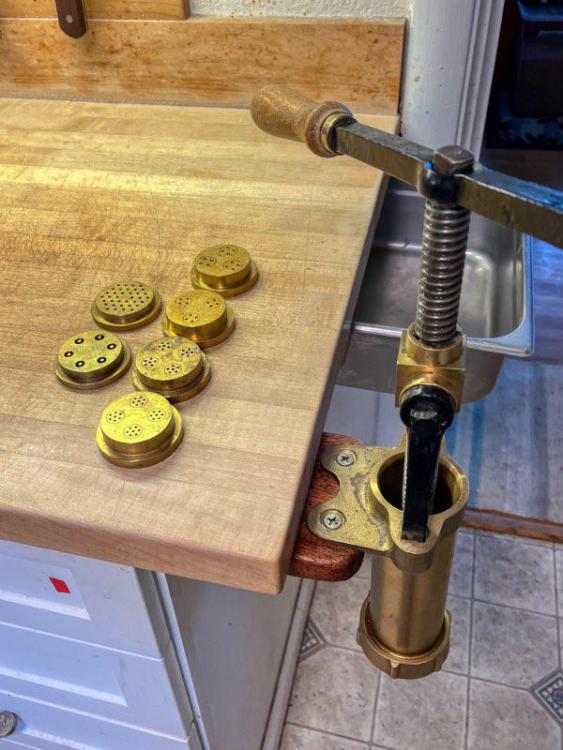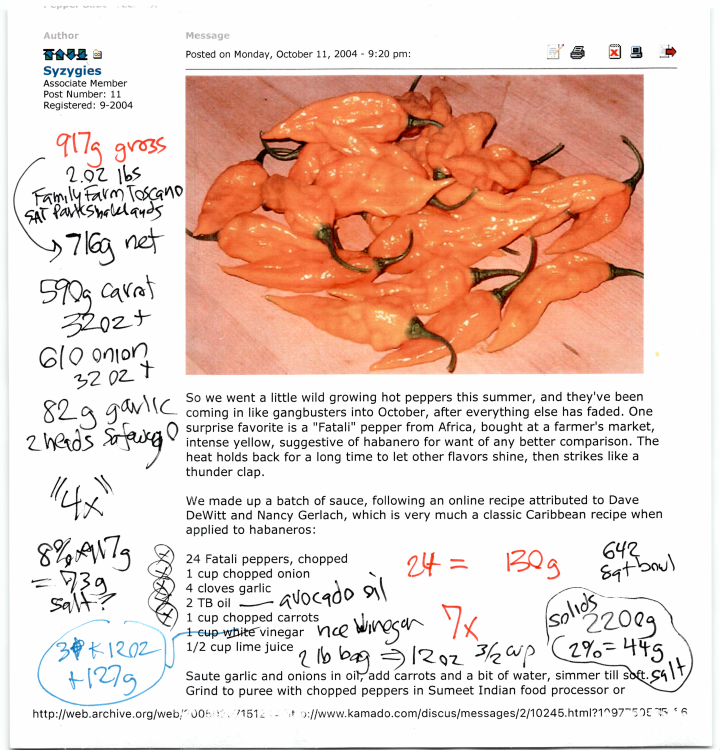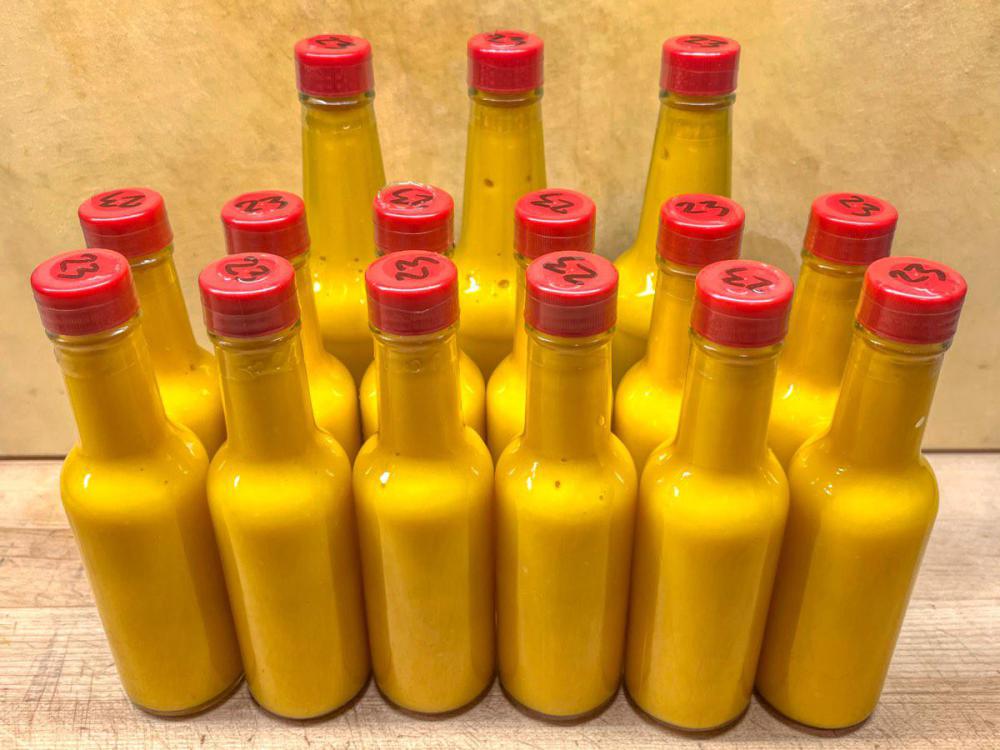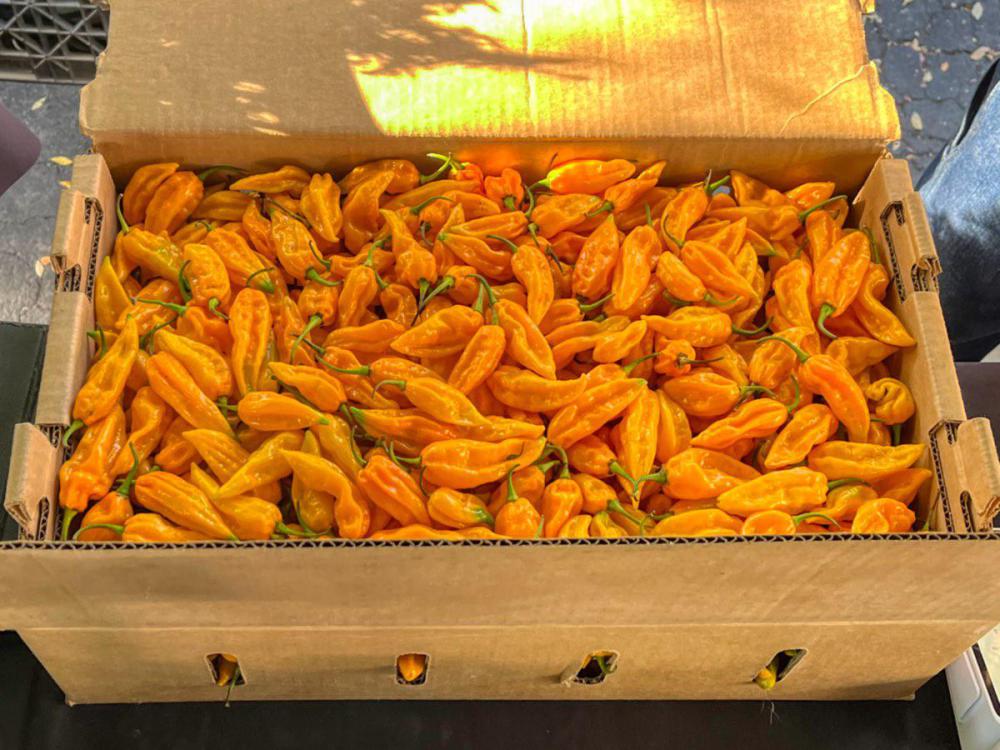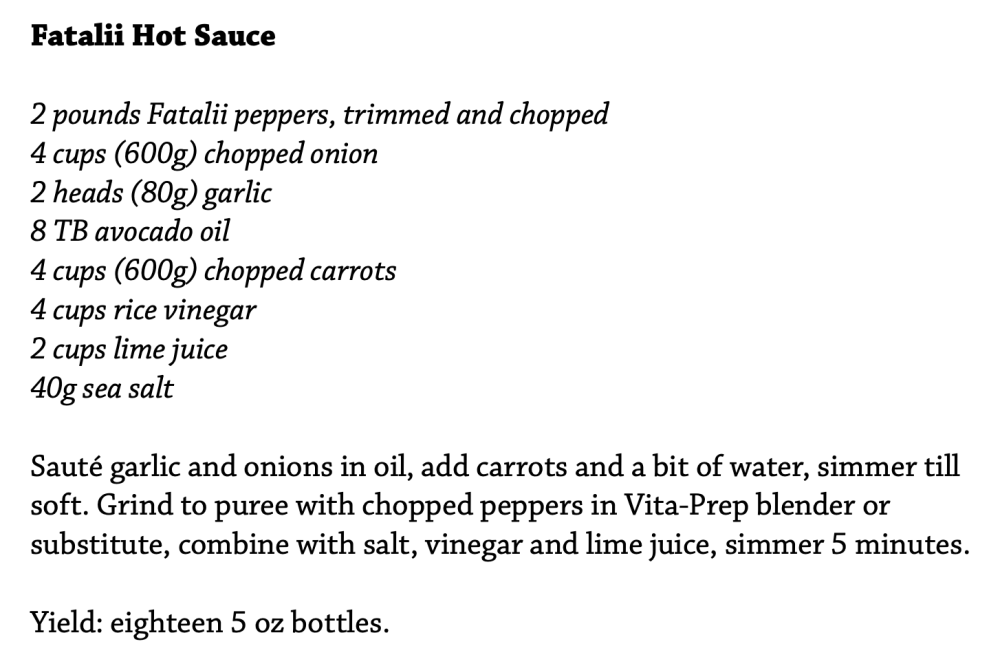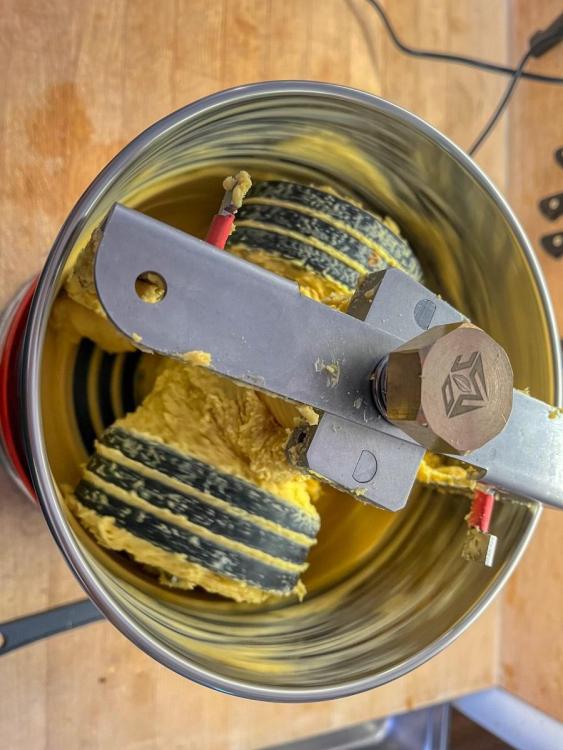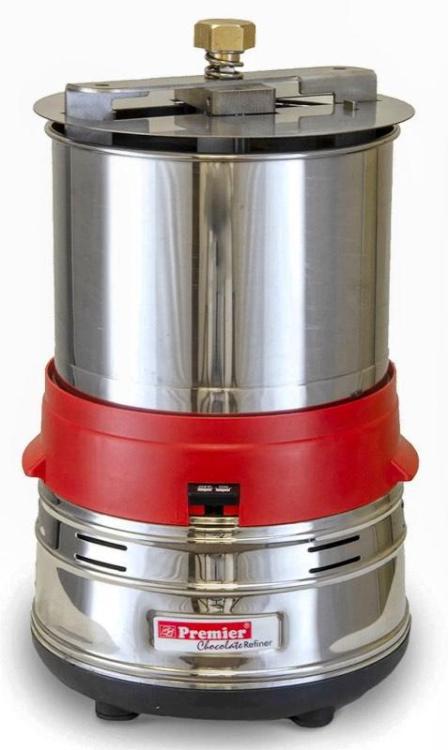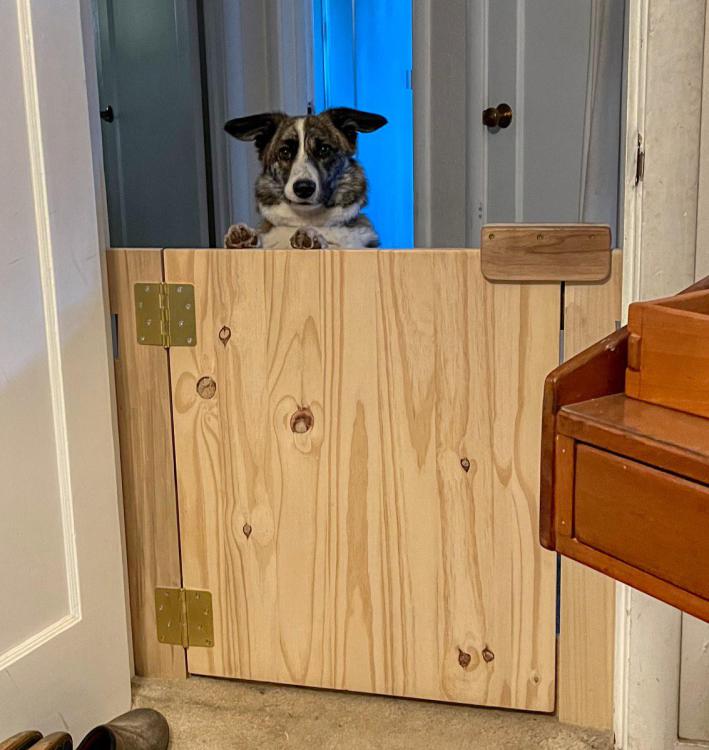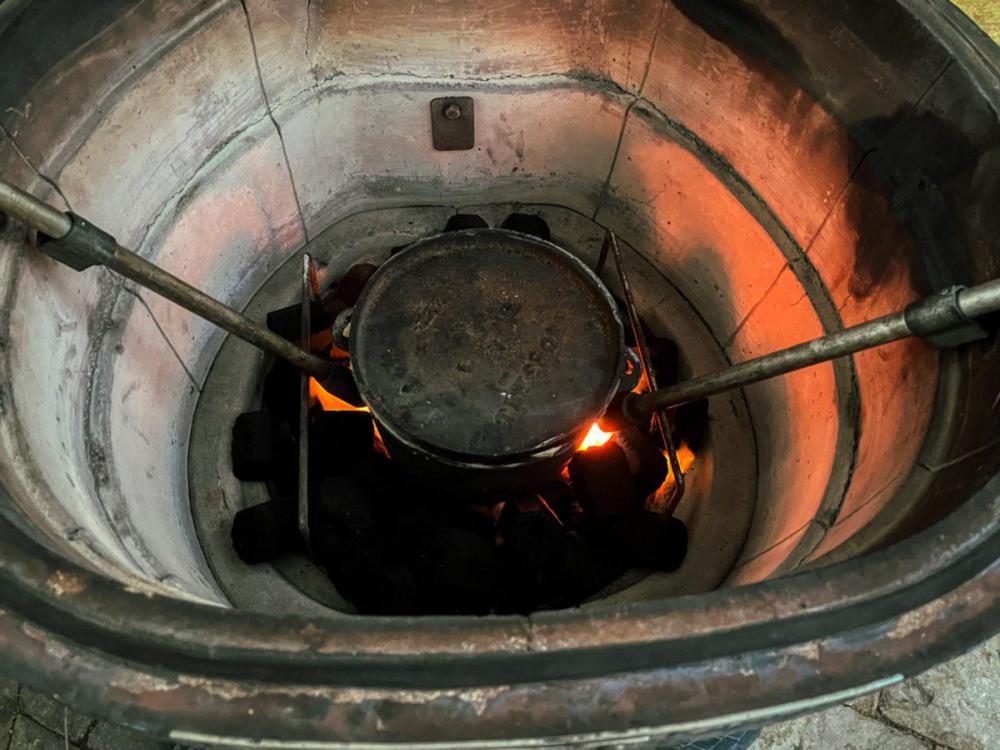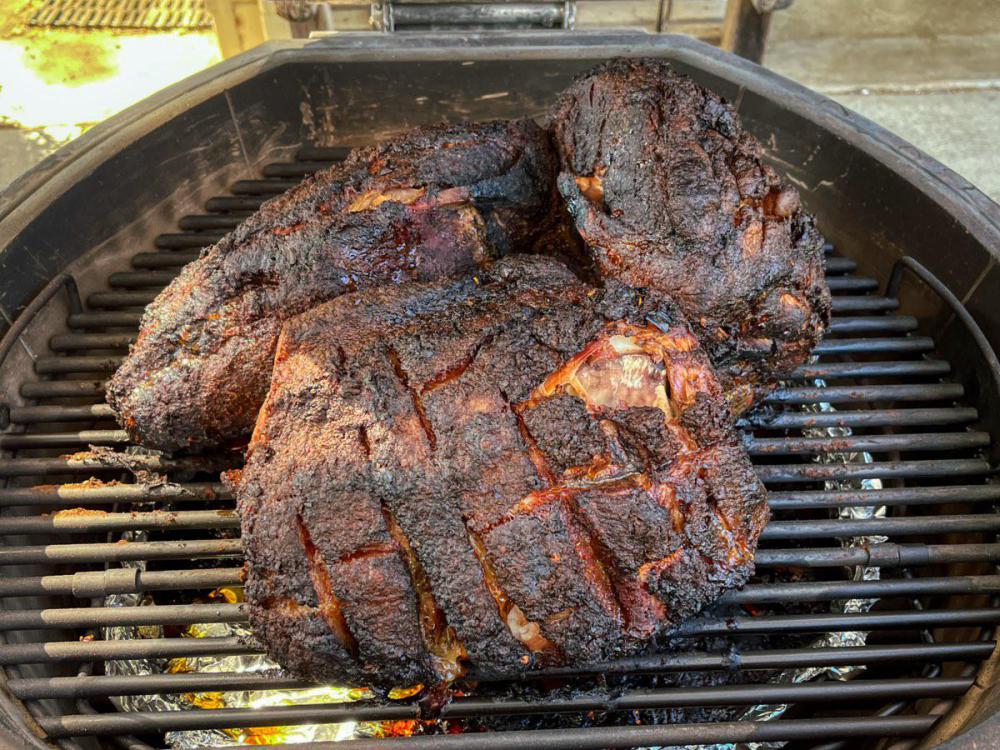-
Posts
1,725 -
Joined
-
Last visited
-
Days Won
50
Content Type
Profiles
Forums
Events
Everything posted by Syzygies
-
Brod and Taylor Sourdough Home Um, wow. This looks radically useful. We see pretty extreme temperature changes in our kitchen, season to season. I can believe that this matters but how much? One of my first lessons in cooking was asking a maven friend in college (now a country doctor) about cheesecake. He told me the four people on our 1,200 student campus who were most proud of their recipes. I interviewed each of them, threw out the superstitions (walk in socks by an ajar oven for an hour afterwards), and intersected their recipes to obtain what anyone now would recognize as one version of a classic cheesecake. This taught me about efficacy. In the kind of optimization that makes companies rich, they get numbers next to each lever revealing how important that lever is. In cooking, most levers are fantasies that hardly matter, even as the best cooks pile up a series of 1% advantages into striking results. So cooking well involves making some deep judgements about what matters, all while relaxing with a beverage of choice. The idea of slowing down my feeding schedule between bakes is very appealing. I hadn't considered seed ratio; I get fine results with less seed, but as always that impression says more about my mental health than whether I'm right. People always say this when they're happy with what they're doing, usually because they're unaware they could do better. The 100% hydration ratio they use in their examples leans hard to one extreme, favoring a certain acid profile. I use this too because it's easy and I'm lazy, but I recognize there's a choice here. Perhaps they address this deeper in their instructions, but I'd believe this choice to be more significant than the variables they do control. Which brings me back to "How much does this all matter?" [ I started a new thread, Brød & Taylor Sourdough Home ]
-

Nixtamal / masa / tacos from Masienda Oaxacan corn
Syzygies replied to Syzygies's topic in Techniques
Yes! We're getting closer to fresh corn season (having past fresh fava bean season) and we love the idea, but we've overdone dressed kernels off the cob. (Olive oil, salt, pepper. A great add-in for pasta or tacos, but one can only eat so much straight.) I thought of fresh corn as a masa add-in for tortillas, but that's a poor idea. Tweaking tamale dough with fresh corn sounds great, I'll experiment too. Along the same lines I love the idea and taste of plantains, particularly ripe plantains, but I can't bring myself to keep preparing and eating fried slices, as is the common side to rice and beans in Caribbean cooking. In her Oaxacan cookbook, Diane Kennedy notes that plantain was a masa filler when corn ran short. That sounds great as a tamale tweak, too. -

Nixtamal / masa / tacos from Masienda Oaxacan corn
Syzygies replied to Syzygies's topic in Techniques
(Someone should send @PVPAUL a McLaren 750S Spider, to see what he cooks for them!) -

Nixtamal / masa / tacos from Masienda Oaxacan corn
Syzygies replied to Syzygies's topic in Techniques
(I freely recognize how absurd my tamales look. Hopefully I freed others to not worry about appearances. It was the height of arrogance to just "I know how to cook!" wing it, rather than watching a few tamale making videos. Tamales really are much less work than this!) -

Nixtamal / masa / tacos from Masienda Oaxacan corn
Syzygies replied to Syzygies's topic in Techniques
We made way too much masa for a party last Sunday, starting with 600g corn which is pretty much the limit for wet grinding in my Premier Chocolate Refiner (fancy Indian wet grinder). I ended up with a pound of leftover masa, even after making too many tortillas. When I gave my New York masa grinder to @PVPAUL he sent us a dry ice freezer care package, including mole, and tamales, which inspired us. Last night I used some leftover KK pulled pork in a riff on a Serious Eats tamale recipe (I grilled the peppers outside on my Solo Stove fire pit). These were the best tamales I've eaten in my life. Tamales are a world changer: One can improvise fillings even more broadly than for tacos, the masa can be frozen more effectively if it will be turned into tamale dough, ... I've always thought mole sauce was one Holy Grail I wanted to master, and yet I didn't understand how to use mole sauce. Tamales might be second night leftovers for a Mexican, but I'm happy to prepare mole sauce to use in batches for tamales. LIGHT BULB TIME: Grinding nixtamal into masa in a wet grinder can take some tending, because an Indian wet grinder is tuned for wetter mixtures such as dosa batter. But one makes tamale dough from masa by adding lard or oil, water or stock... ?? If I make my tamale dough straight from nixtamal in a wet grinder, including all wet ingredients, can I just run the grinder unattended, as if I were making dosa batter ?? -
I never made a spelt recipe? Here is my most recently revised Numbers spreadsheet. Sourdough Bread.numbers
-
I recently redid my spreadsheets to match current practice. First is "worksheet", second goes on wall while I work. It doesn't really matter if you're consistent and don't care about comparing notes with others, but I account for board flour, shrinkage, to nail actual hydration as if this were a chemistry lab experiment. I've seen other accomplished bakers who ignore the starter hydration, for example. Their effective hydration is a local fantasy. We grind some of our flour. We've been buying white from Acme Bread, famed in Bay area. They have Guisto's make this for them, but likely a different blend than one can buy elsewhere. I learned to accelerate the hydrolyse for each step by 60 seconds in a vacuum sealer chamber. This makes an obvious difference for pasta dough, and I believe a difference here too. I rediscovered "bassinage" where one kneads the dough at a comfortable hydration, then adds water at the end using Chad Robertson bowl folds. I like to knead a long rope, fold it over and twist, knead again to a long rope... My theory here is that one does better with a kneading technique that doesn't cause the bran to cut through the developing gluten. We use the KK in summer to avoid heating the house, and a convection oven in winter. I used to worry about filling the oven with ample steam. We now swear by the Challenger Bread Pan.
-
Flavor. I built storage in a shed that's definitely ambient. California is wet some, mostly dry, and I barbecue more in dry weather. Of course "there must" be a humidity effect, storing charcoal, but you should directly experiment to find out how pronounced this is. My belief is that the effect can be too faint to worry about. You want a load of charcoal for low & slow to burn like a fuse, and the hot fire dries out any residual moisture in the nearby charcoal as it progresses.
-
Yakitori Kono, New York City Here's some binchotan in the wild, at my favorite restaurant in this hemisphere. I've been three times. He gets better. He spent six months researching chickens before finding a Pennsylvania farmer that supplies the restaurant. Best chicken I've ever tasted, including Japan and the SF Bay Area, e.g. The Local Butcher Shop. The kappo-style yakitori omakase is $175 per person, but one can get into serious trouble there ordering sake and bonus skewers, in an enthused state where one loses all reason. Go for beer and just the prix fixe, and have just as good a time.
-
Many of us won't know, because for low & slow cooks we used extruded coconut lump charcoal. It's poor-mans Japanese binchotan charcoal, if you know what that is. Komodo Kamado makes the best extruded lump, but I also enjoy Than Charcoal as an alternative, a bit less neutral in a way that reminds me of roadside Thai barbecue. Komodo Kamado's coffee charcoal, when available, is the single best lump charcoal I've ever used. If you're cooking for restaurant investors, pull that out. There are many ways to look at ordering KK charcoal. People go for pallet shares (group orders) which is a great way to meet people in the clan, but there's no actual definition of a "full pallet". Try different orders, e.g. 12 boxes, to see how shipping works out, and just go for it. Or order a few boxes of Than and save it for low & slow, if infrequent. It kind of depends on your price sensitivity. I've always found that a poor memory is the best way to get past spending money. A heretical point of view would be to buy high quality briquets, with no filler that changes the lump taste. I love all Fogo lump charcoal choices, and I've recently started buying their briquets. They're denser than lump, and the uniform geometry also helps with getting to 550 F for pizza. KK COCONUT SHELL AND COFFEE WOOD CHARCOAL Than Charcoal, Chef's Choice Premium Grilling Charcoal, Log Style, 22lb Binchotan White Charcoal FOGO BRIQUETS (2 BAGS OF 15.4LBS)
-
I only started because I had a problem with freshly ground flour. Not to be unduly graphic, but also in England there must be country walks where there's a giant flat brown disk of bovine origin? When one doesn't adjust for green flour, that can be how a loaf comes out. Some people don't have this problem. Adding AA changes the limit on hydration. I'd turn this around: Only a moron would take typical doses of vitamin C after seeing the difference 60ppm makes in bread.
-
Yes, my spreadsheet was inspired by my bread spreadsheet, for sourdough batards from freshly ground flour. Various people here have adopted my method for producing steam in the KK. What I don't really understand is how my process is like releasing a marble in a spherical bowl; no matter how I start out, I end up a few iterations later with exactly the same recipe. I'd like a few variants in the rotation... Now that I'm retired I want to take the bread intensives at the San Francisco Baking Institute. Michel Suas wrote Advanced Bread and Pastry, a professional tome that makes it clear a well-trained French chef has a PhD understanding of cooking. That remains the only book I know that addresses the challenge of "green flour", freshly ground flour that hasn't aged. I now add 60 parts per million ascorbic acid.
-
Wow. I freaked at that picture, thinking that was now your stash! There's a pretty good learning curve, nothing that will throw you, but many would give up. Let me send you an upgraded handle! The traditional handle is the weak link in the design. Being too stubborn with a too stiff dough, I managed to widen its hole. I then went through several spectacular failures of embarrassing experiments making a replacement handle, before recognizing that the forces involved were beyond my usual experience. One can spend five minutes in Adobe Illustrator, then upload a design to a professional laser cutting service such as SendCutSend. I did, and I'm thrilled with the result. As for dough, I keep a MacOS Numbers spreadsheet of all attempts, which computes target hydrations for me. Too wet a dough just sticks together, but too dry can jam the bigolaro and make it howl. One wants to nevertheless go as dry as practical. This is easiest mixing the dough in a food processor (I mix other doughs by hand or in a stand mixer). Working without exact measurements, people tend to aim for a dough that just barely clumps together. A principle I've learned the hard way: The dough has to taste good. One can extrude any dough, this isn't a constraint. It nevertheless reminds me of traditional Japanese woodworking. They use a rice paste as glue. It's not really a glue in the sense of Titebond III Ultimate Wood Glue, or even traditional rabbit skin glue, but rather a mechanical stabilizer to fill faint gaps in the elaborate joinery that actually secures the structure. So the new guy is tasked to cook the rice. He asks what to aim for? "So it tastes good." I use food grade silicone grease on the shaft and die holder, wiping excess with a paper towel. I use a strap wrench to remove the die holder when it gets stuck. I rub a bit of olive oil around the plunger. If I've concerned that the bigolaro will howl halfway through, I feed the dough in several steps so the last portion doesn't get too compressed (aspiring to turn to diamond). I separate the strands, shaking on cornstarch if needed; flour will clump rather than dissolve away, cooking. For Asian noodles such as rice, one can extrude straight into boiling water as I saw done in a kanom jeen namya breakfast establishment in Thailand (had to throw that in to keep Dennis paying attention...) It's easiest to learn on fat extrusions like fusilli, as they easily separate, and can be cut shorter once they dry a bit. A related puzzle is how to clean the dies. Restaurants just soak them, changing the water daily, and toss the first dough to come out. A dental water pick does a reasonable job, once they've soaked. I happen to use an electric pressure washer, outside. We bought one to maintain our ipe deck, but I also use it to clean our Mexican molcajetes, whose open grain can trap food. I intend to make a tongue-in-cheek YouTube video on all this, going into the woodworking for my pressure washer die holder, suggesting with a straight face one should install an ipe deck to justify the pressure washer purchase, even though it's really to support the bigolaro.
-

Graef H9 manual slicer (fantastic)
Syzygies replied to David Chang's topic in Relevant Product Reviews
-

Nixtamal / masa / tacos from Masienda Oaxacan corn
Syzygies replied to Syzygies's topic in Techniques
That has to be it. For centuries, masa was stone ground "a mano" using a metate. Modern expediencies involve using powerful grinders, far more powerful than a food processor; Masienda sells a $1995 Molinito that does a credible job. However, I went to an acclaimed restaurant that let me tour their kitchen to see their Molinito, and my friends at table thought my tortillas were clearly better. One can see all sorts of possible confirmation biases here, such as a restaurant needing to "lean in" to an obviously artisanal style, for diners who can't discern "traditional but better" quality unassisted. Cutting isn't grinding. The best way I know to grind is using a Premier Chocolate Refiner, an upgraded version of advice by Bricia Lopez to use an Indian wet grinder. The process is tedious, less tedious with experience, but it produces fundamentally different results. The friend who introduced me to fresh masa now has the Vita-Prep commercial blender from my former New York apartment. Working too wet then mixing in masa harina, he still wasn't satisfied with the results. For this purpose a Vita-Prep is far more powerful than a Cuisinart (I have both). How one cuts matters. For a parallel problem, Serious Eats' The Best Way to Mince Garlic details the significance of different techniques. I'd say "not puffing" is a symptom, not the root issue. For a parallel problem, consider crema on an Italian espresso. People expect to see crema as a certificate of quality and correct technique, but it's actually easily manipulated detritus in the beans, independent of flavor. Here, based on experience, I'm not concerned that you can't puff but I'm profoundly suspicious of Cuisinart masa. -

Nixtamal / masa / tacos from Masienda Oaxacan corn
Syzygies replied to Syzygies's topic in Techniques
The first Rick Bayless method is how I've always rescued stale artisan bread, but I then want to toast the bread. He's good, but my younger attempts at learning to cook Mexican based on his books floundered. Diana Kennedy got me past restaurant Mex to regional surprises, and Bricia Lopez unlocked an ingredient one could do better than restaurants (tortillas from homemade masa), freeing various of us here to then improvise to our heart's content. I like his second method. I'd be tempted to instead set up a @PVPAUL pipeline, passing fresh tortillas through an actual steamer then do-like-Paul onto open flame briefly to restore some character, then into the warming basket. Despite my best efforts to free my New York apartment to the four winds (My second masa wet grinder in NY became Paul's second masa wet grinder, and you wouldn't believe the Mexican goodies freezer care package he sent us as thanks) there were many casualties, including a Brazilian soapstone pot. It was too small, and I've cracked others, but even cracked they would make phenomenal tortilla warmers for occasions like this, as they hold heat for hours. Sturdy clay would work well for shorter waits. -

Nixtamal / masa / tacos from Masienda Oaxacan corn
Syzygies replied to Syzygies's topic in Techniques
-

Nixtamal / masa / tacos from Masienda Oaxacan corn
Syzygies replied to Syzygies's topic in Techniques
Towels! You probably already have some. -

Nixtamal / masa / tacos from Masienda Oaxacan corn
Syzygies replied to Syzygies's topic in Techniques
In California we have many Mexican restaurants / grocery stores, and the bigger ones include tortilla factories on premises. There are two within ten minutes of my house. Tortillas are sold in bags of fifty, often still warm, and it's a common sight while waiting in line to see a Mexican leave with two to four bags. My next door neighbor (the master woodworker) throws parties this way. For his birthday some years back his family bought him an outdoor griddle, a cart with a propane tank, about the size of a typical gas grill, with instead a restaurant-style griddle on top. I hid this for them till his birthday, and borrowed it back to serve tacos for 50 at a wedding rehearsal dinner. (I made pork butt in the KK, and Rancho Gordo beans, and bought the tortillas, guacamole, chips, and salsas.) French fries are twice cooked. So are commercial tortillas. They are usable as sold warm in the bag, but everyone always heats them on a griddle for serving. Think "buy sliced bread, make toast." Our tortillas from homemade masa can be more substantial, but the same principles could apply. What one might overlook if one has never seen this: Commercial tortillas are grilled, and often served, in pairs. This of course wouldn't work for the first cook, which for us is usually the only cook, but it works for the second. This has the effect of grilling one surface of each tortilla while the inside surfaces of the pair steam each other. One flips the pair. One could reverse the pair to grill all surfaces or leave this alone, a matter of taste. For a party, the point here is one can do twice as many tortillas at once, grilling in pairs. For thin commercial tortillas, it is usually the case that one builds a taco leaving the pair alone. Why is a subject of debate, and it's largely custom, I'm not sure one can believe any single answer. One theory is that individual tortillas are fragile, but both tortillas in a pair are unlikely to split in the same location. A different theory is that one can then separate the two tortillas to make two tacos from one. I've tried this and they don't always separate that easily, suggesting a competing theory that the pair is to provide more food, and the vendor doesn't want to try separating them either. For us, if they're cooked sufficiently on pass one, they'll grill just fine in pairs and separate easily for serving. I press mine thick enough that one wouldn't want to use pairs to make tacos. So this is what I'd do for your party. You don't even really need a practice run if there isn't time; good judgment should keep you out of trouble, first try. -
Hoo boy, a question dear to my heart. After building dedicated shelves elsewhere for my extruded lump charcoal museum (I have each generation of "evil empire" and of Dennis charcoal) I built a sled for wood scraps, to slide into the space I'd freed up. My neighbor is a master woodworker, and I get great scraps. A wheel's a wheel, right? I could hardly move my first draft. There are specs for the weight a wheel can handle, and wheels move easily when they're way under max load. (What's amusing is like the online "sagulator" for sag calculations, there are online calculators to predict how much weight a screw can handle before pulling out. My wheel boxes are entirely held in place by screws resisting being pulled straight out, and this design is generously overbuilt.) I can move this sled fully loaded with my big toe. Wheel size and construction matters.
-
I'm back to playing with my bigolaro for Italian pasta. (Past experiments have been mostly Asian, such as fermented rice noodles for Thai Kanom Jeen Nahmyah Bpak Dtai, or alkaline noodles for ramen.) There's a narrow dough hydration window, dry enough to extrude yet wet enough to knead. Kneading helps develop gluten, if possible. I'm well on the way to breaking my Atlas 150 pasta maker, as I've long wanted to do in order to justify an upgrade. Dough for extruding can be that stiff. Looking at upgrades, I saw hand cranked dough sheeters aimed at pasta. David: Would a truly stiff dough break your machine?
-
After years wondering if I'd ever find fatalii peppers again, I stumbled on the mother lode at a new participant in my local farmers market. New batch of my favorite Caribbean hot sauce recipe. Garlic, onions, carrots, lime juice, rice vinegar, and more chile heat than many people can handle. Think habanero, only more heat and a more complex flavor.
-

Nixtamal / masa / tacos from Masienda Oaxacan corn
Syzygies replied to Syzygies's topic in Techniques
Oh, he's ahead of all of us. This will be his second masa grinder! -

Nixtamal / masa / tacos from Masienda Oaxacan corn
Syzygies replied to Syzygies's topic in Techniques
I'm emptying my New York apartment so I can retire to California. I have the standard version of this grinder in New York, upgraded with chocolatier hardware to the equivalent of my preferred model in California. This thread gives a good idea as to how one would use this to grind masa. Does anyone want it? It's yours for the shipping from New York. I'm retiring so I can spend more time with this Corgi / Border Collie lovable monster. -
I'm credited with devising the smoke pot. I see it as a matter of personal choice, though my advice would be if you want to make sure it's your choice, don't let your spouse taste the results till you've made up your mind. I must always use a smoke pot if I want to stay married. A nice neutral analogy would be garlic presses. Carefully mincing garlic with a really sharp knife yields tiny undisturbed bits. The Joseph Joseph Garlic Rocker is a wonderful tool that quickly minces garlic with less damage than a garlic press. The MÄNNKITCHEN garlic press (makers of my favorite pepper grinder) is awesome but mashes the garlic. A microplane, more so. The Toiro Kitchen Suribachi Set is the best set of suribachis I've ever laid hands on, and purees garlic. So what's the difference? Serious Eats makes a careful analysis of the chemistry here: Disturbing garlic creates a chemical reaction that makes garlic more aggressive. I view this as a choice, day by day, like which sherry to cook with. Others have strong opinions. Same with smoking wood. When wood is allowed to burn, it creates more aggressive flavors. A smoke pot keeps the wood from actually burning. Use more wood, but get a more refined flavor, none of the creosote that open flames can create. Various of us on the commercial barbecue trail have had our hearts repeatedly broken. This can lead to an obsession with unmistakable smoke. I prefer to use smoke as a spice, but not the only spice, it needs to blend in with the rub and the meat. Speaking of "only spice", in college I bought "pumpkin pie spice" so I could make my Mom's pumpkin bread recipe. The women in my dorm staged an intervention, gently letting me know that one could buy the individual spices. While I now make pilgrimages to Kalustyan's, at the time I was horrified. "Have you seen what those spices cost? That's a semester's pot!" Which is another good analogy: Smoking a joint is a different experience from using a vaporizer, and reasonable people differ on which provides a better flavor experience. If you know which way you lean on that question, I've got a good guess which way you'll lean on a smoke pot. As the first photo reveals, getting a smoke pot going takes some practice. I like to light the charcoal under the pot while I heat the pot, with a pair of weed burners positioned using hose clamps. (This pork butt was for an "intimate" wedding rehearsal dinner for my stepdaughter.)



